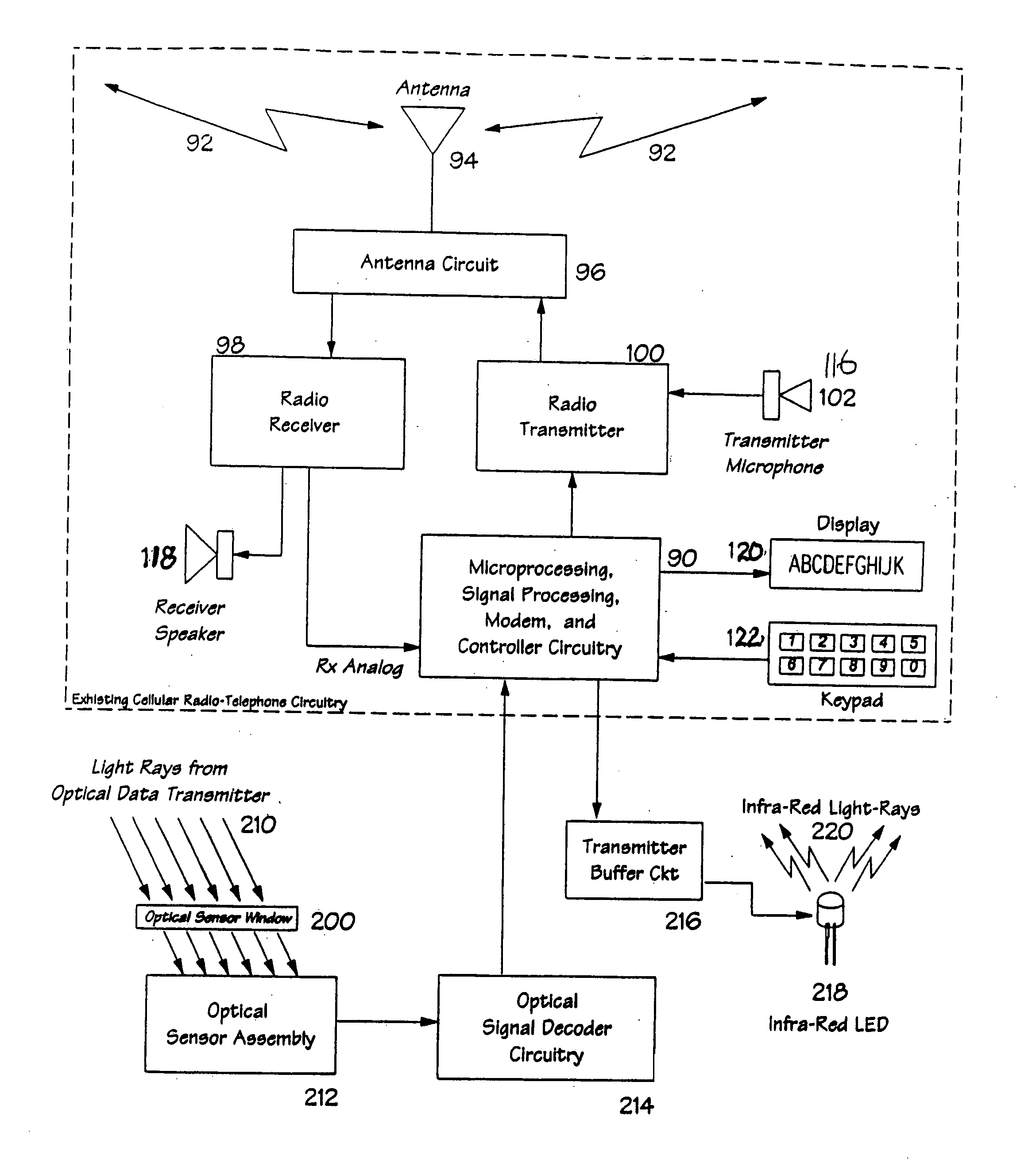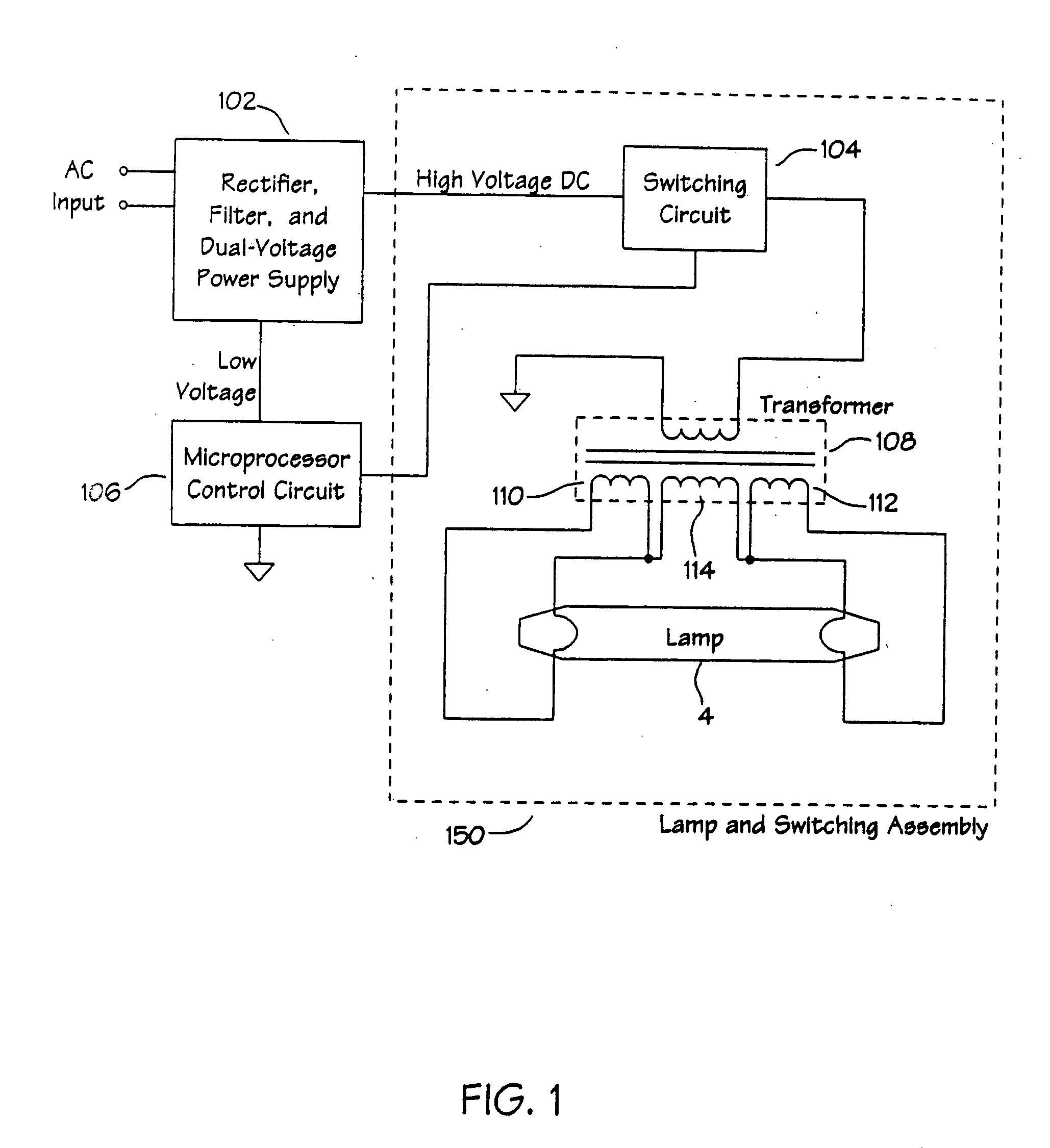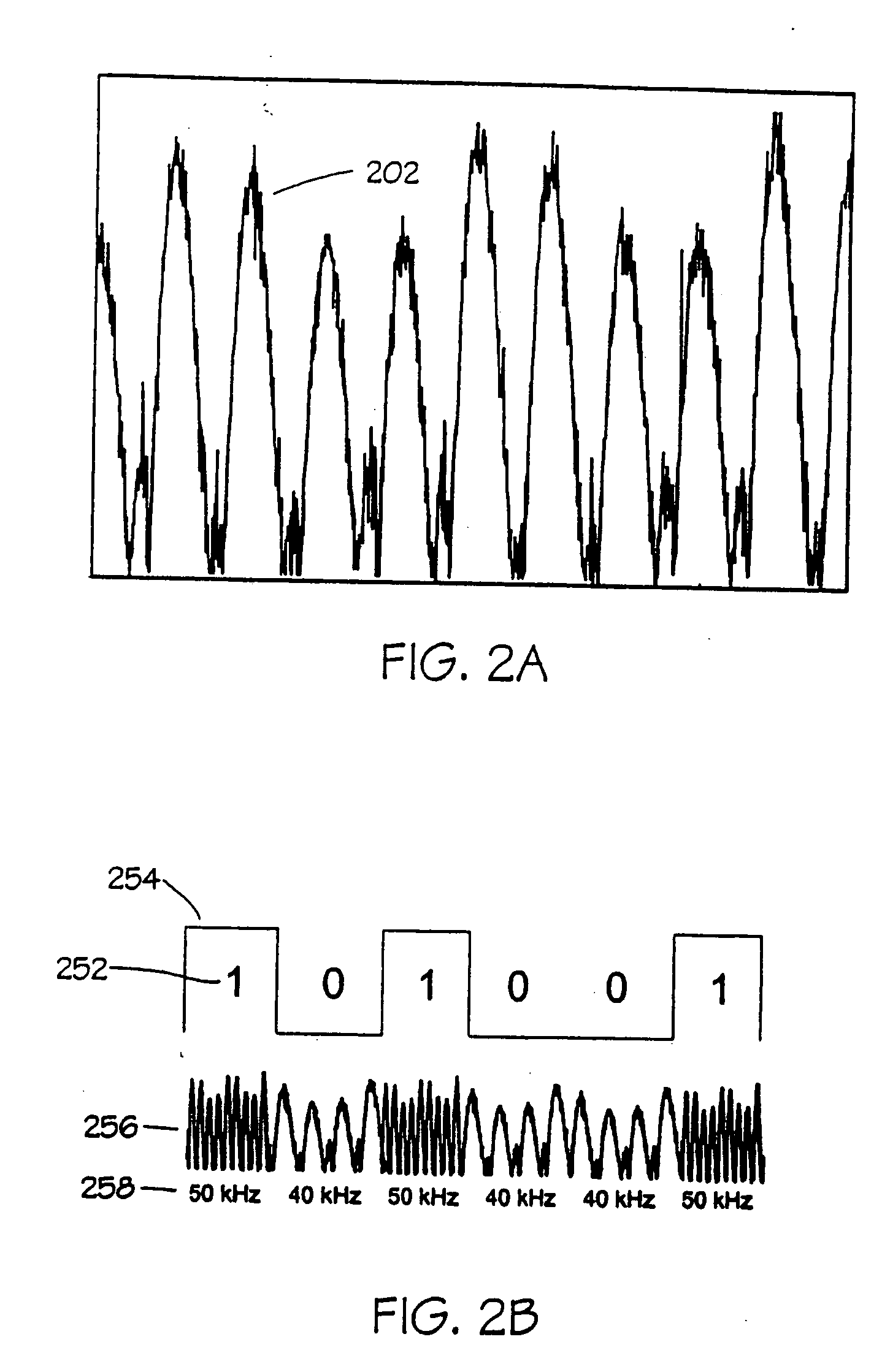Method and apparatus for the zonal transmission of data using building lighting fixtures
a technology of building lighting fixtures and data transmission, applied in the field of data transmission, can solve the problems of limited data transmission bandwidth, difficult affecting the ability of users to be located, so as to facilitate the ability to track and locate users, the effect of reducing the cost and increasing the accuracy
- Summary
- Abstract
- Description
- Claims
- Application Information
AI Technical Summary
Benefits of technology
Problems solved by technology
Method used
Image
Examples
— main embodiments
—MAIN EMBODIMENTS
[0217] Note that part names as used herein are descriptive only, and should not be taken as limiting their function or purpose. It is important to note that functional blocks in the figures are shown for purposes of discussion only, and nothing therein should be construed to imply their necessary configuration or even presence for my invention to work. In addition, similar embodiments based on infrared, visible, or ultra-violet optical communications, or a combination thereof, or a mix of one spectrum for transmission and a different spectrum for reception, are anticipated by this invention.
[0218] The main embodiment of the invention describes an fluorescent lamp lighting ballast that uses the output of the lamp or lamps under it's control to transmit data to one or more receivers. The configuration allows for the transmission of fixed data messages, such as a serial number, while allowing for the transmission of data messages that can be modified in the field. Thi...
PUM
 Login to View More
Login to View More Abstract
Description
Claims
Application Information
 Login to View More
Login to View More - R&D
- Intellectual Property
- Life Sciences
- Materials
- Tech Scout
- Unparalleled Data Quality
- Higher Quality Content
- 60% Fewer Hallucinations
Browse by: Latest US Patents, China's latest patents, Technical Efficacy Thesaurus, Application Domain, Technology Topic, Popular Technical Reports.
© 2025 PatSnap. All rights reserved.Legal|Privacy policy|Modern Slavery Act Transparency Statement|Sitemap|About US| Contact US: help@patsnap.com



